Ford Motor Company has retained ‘the UK’s best-selling brand’ soubriquet, because, when you take all of its operational aspects into account, its product line-up remains one of the most comprehensive across the entire motoring business. The new car sampled here, features extras that whisk it from an affordable £16,795 to a customised £18,950, before Motor Source Group discounts are applied, and highlights the Fiesta’s market constancy.
Although the alterations from previous to the current generation are minimal, they are also thorough. Its dimensions, which are dictated by its market position, have grown slightly (a teensy 71mm increase in length, 13mm increase in width and 4mm increase in wheelbase). While scarcely a revolution, I can state that it is one of the most appropriately evolutionary upgrades of the nation’s most in-demand model. However, the new Fiesta feels as fresh as a daisy and looks excellent from any angle, inside or outside.
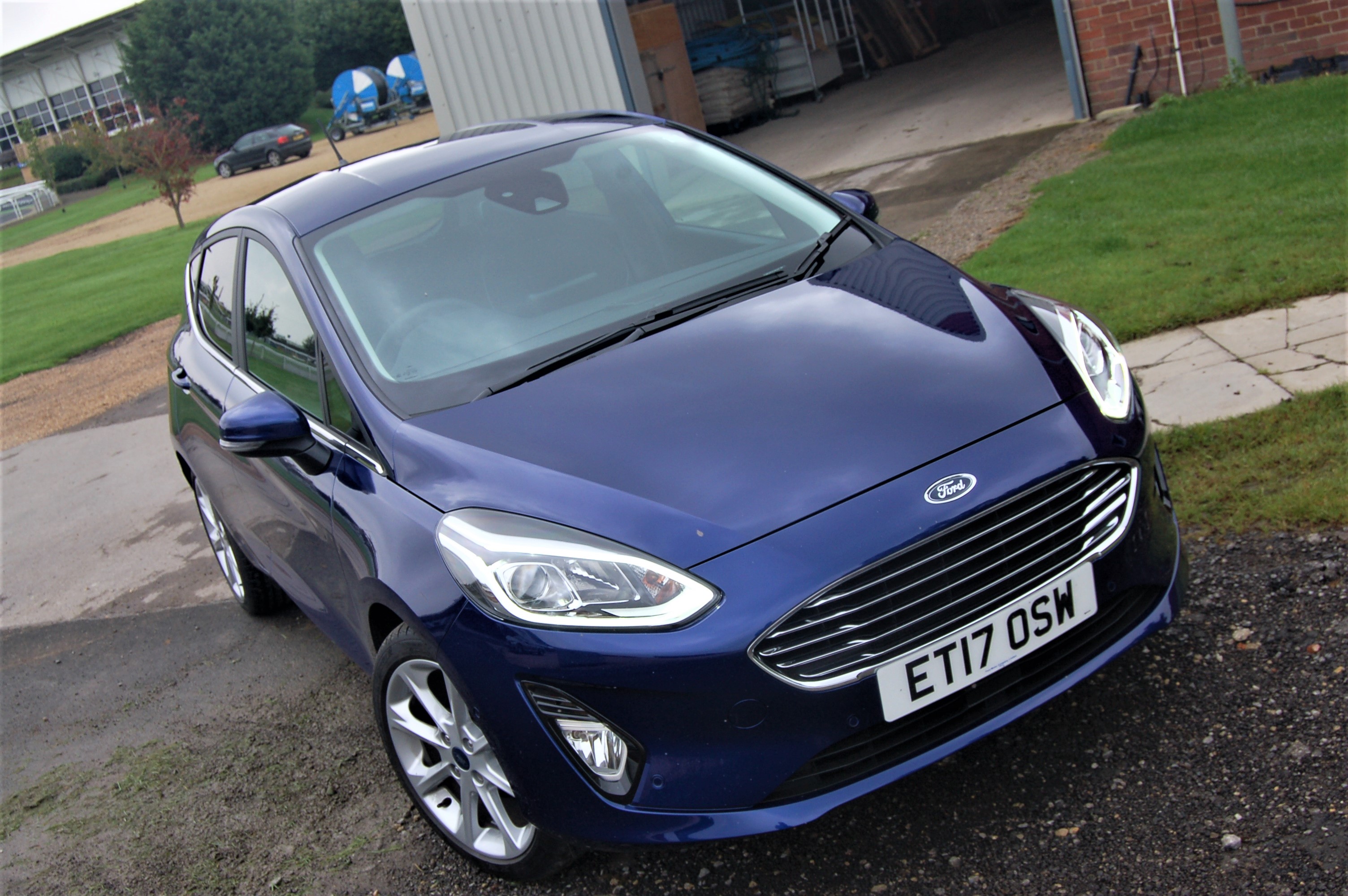
All ‘backbone’ models need to be monitored carefully. Ford proves that, without altering too much of the excellent core product, a judicious investment would result in a more mature but no less engaging end product. If anything, the new Fiesta demonstrates that Ford can turn its car from everyman to Superman.
The new horizontal tail-lamps enhance the width of the car and the smoother front-end looks even more integrated. The swoopy cut-lines and accents have been removed and, although the window area is largely identical to the previous generation, the new appearance is not only very attractive but also highly competent.
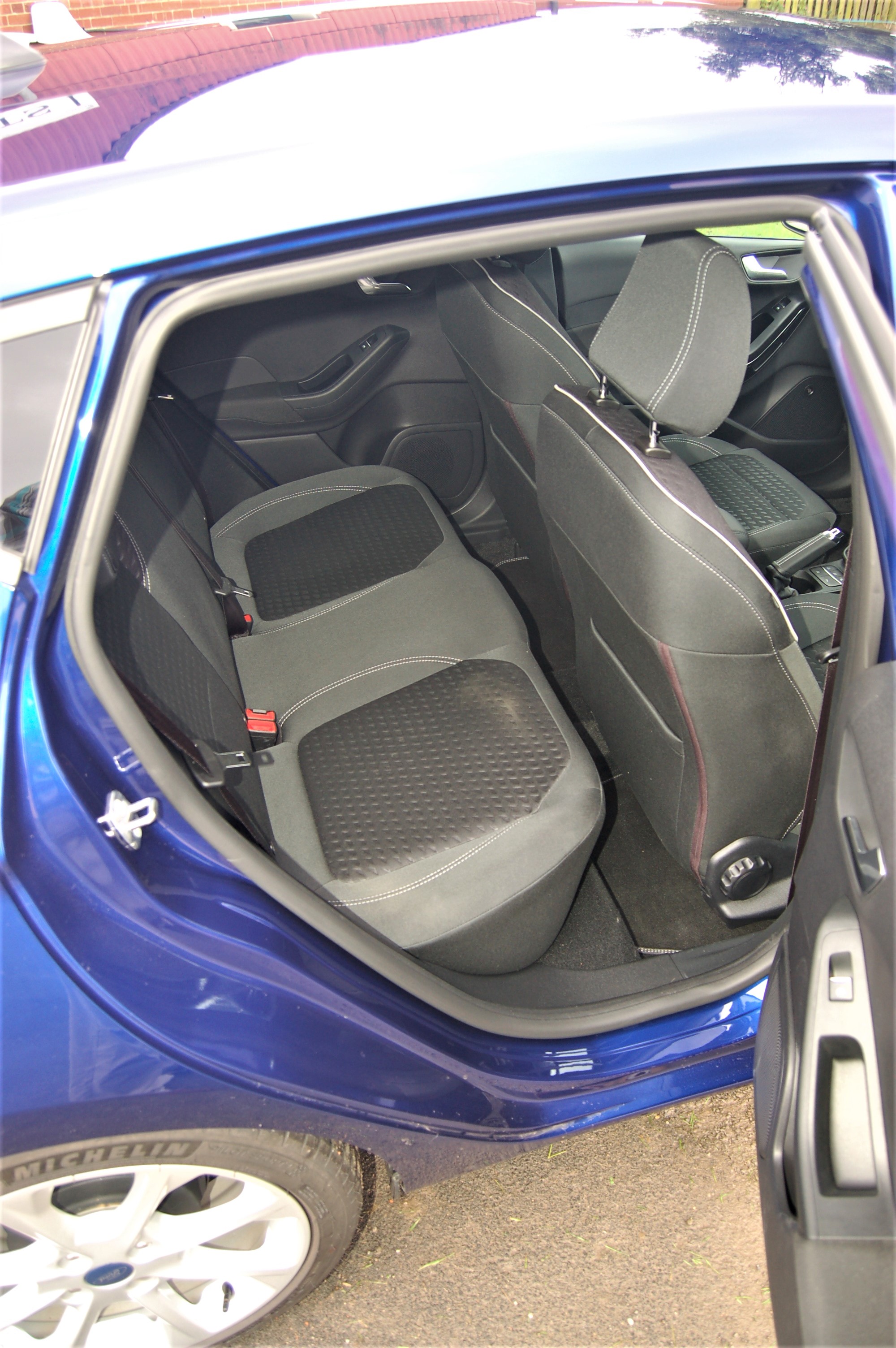
Its interior is colourful and inviting, the driver being confronted (in Titanium trim) by an 8.0-inch touchscreen that is easily read and close enough to the driver to operate easier. However, the main analogue dials in the instrument cluster are also of larger diameter and benefit from enhanced clarity, supported by a 4.2-inch TFT information screen between them that can be accessed by dabbing the steering wheel buttons, or the end of the column stalk.
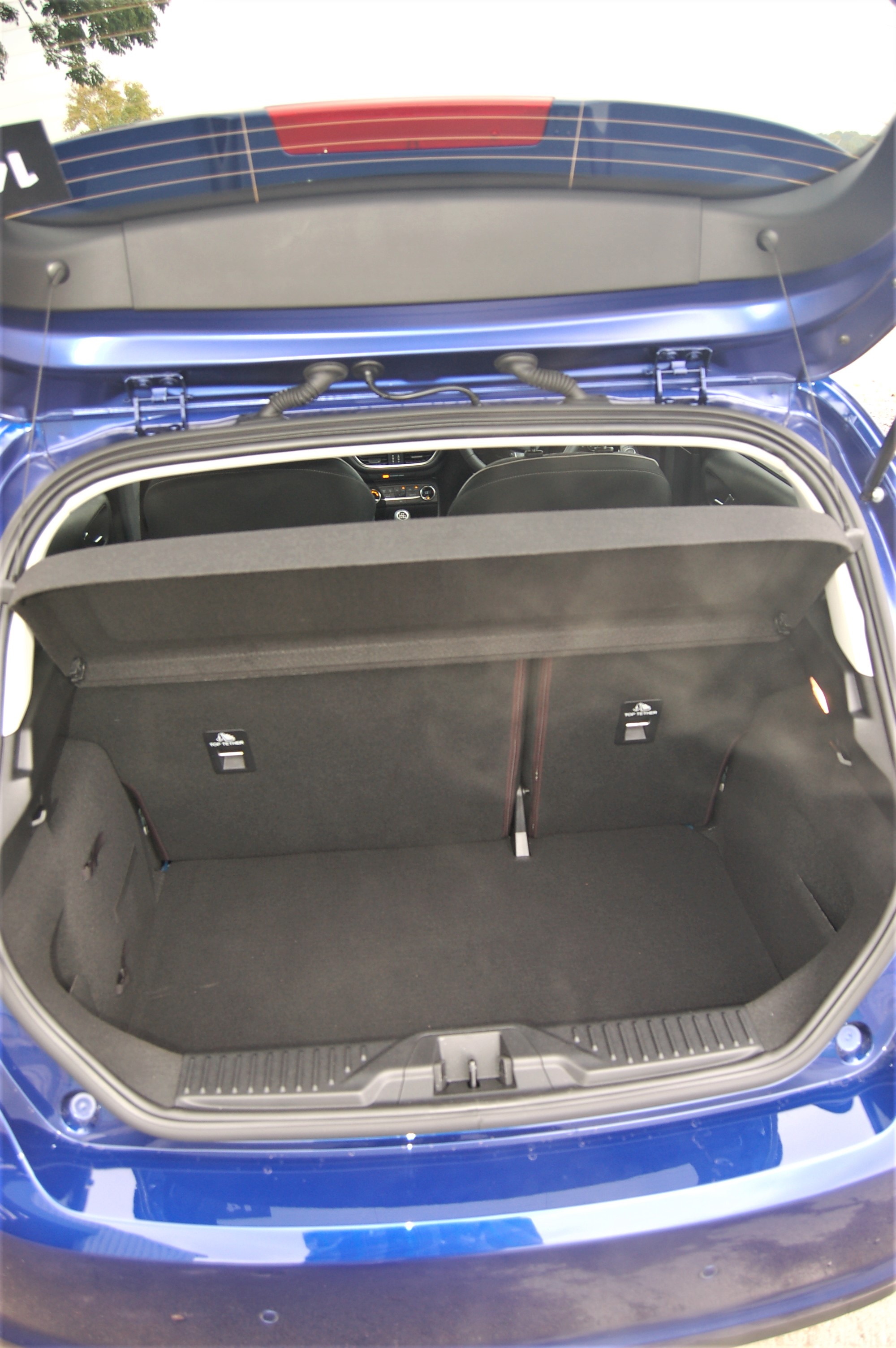
Ford has installed less space-robbing seats, while increasing the range of adjustments that also include the steering column, without diminishing comfort levels. In packaging terms, the Fiesta feels airy and roomy and its 300-litres of boot space, that can be expanded by folding the rear split seat backs, is class competitive. More importantly, the showroom appeal that has always been a Ford benefit is perpetuated by the use of a soft-touch dashboard moulding and other surfaces that provide a tasteful and tactile environment. With a ‘Vignale’ super-trimmed version also available, ‘downsizers’ will find a Fiesta that meets their class expectations.
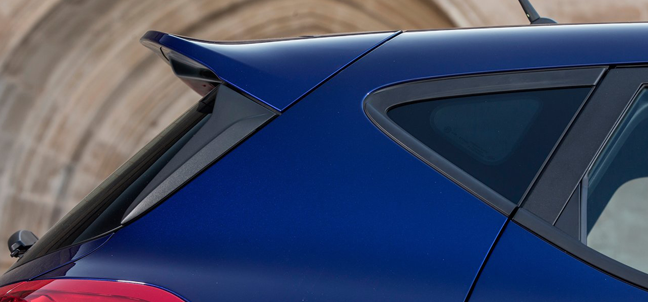
It is helpful that the new Fiesta’s stock of equipment is quite decent at this mid-range level, with folding door-mirrors (complete with puddle-lamps), LED front daytime running-lamp and rear illumination signatures, Halogen headlamps, high levels of connectivity, a trip computer, air-con, cruise, keyless start/stop, rain-sensing wipers, auto-on lighting and illuminated cupholders to contend with. Although the blue paintwork costs £495 extra, parking assist is £500, the B&O premium, 10-speaker stereo adds £300, upgrading from the standard 16.0-inch alloys to 17.0-inchers is £350, electric rear windows factor in £175, the neat door-edge protectors are a more modest £85, while the driver assistance pack (pedestrian detection, distance alert and both pre-collision preparation and adaptive cruise control) requires an extra £200. That’s from where most of the £2,155 extra invoice cost comes pre-discount.
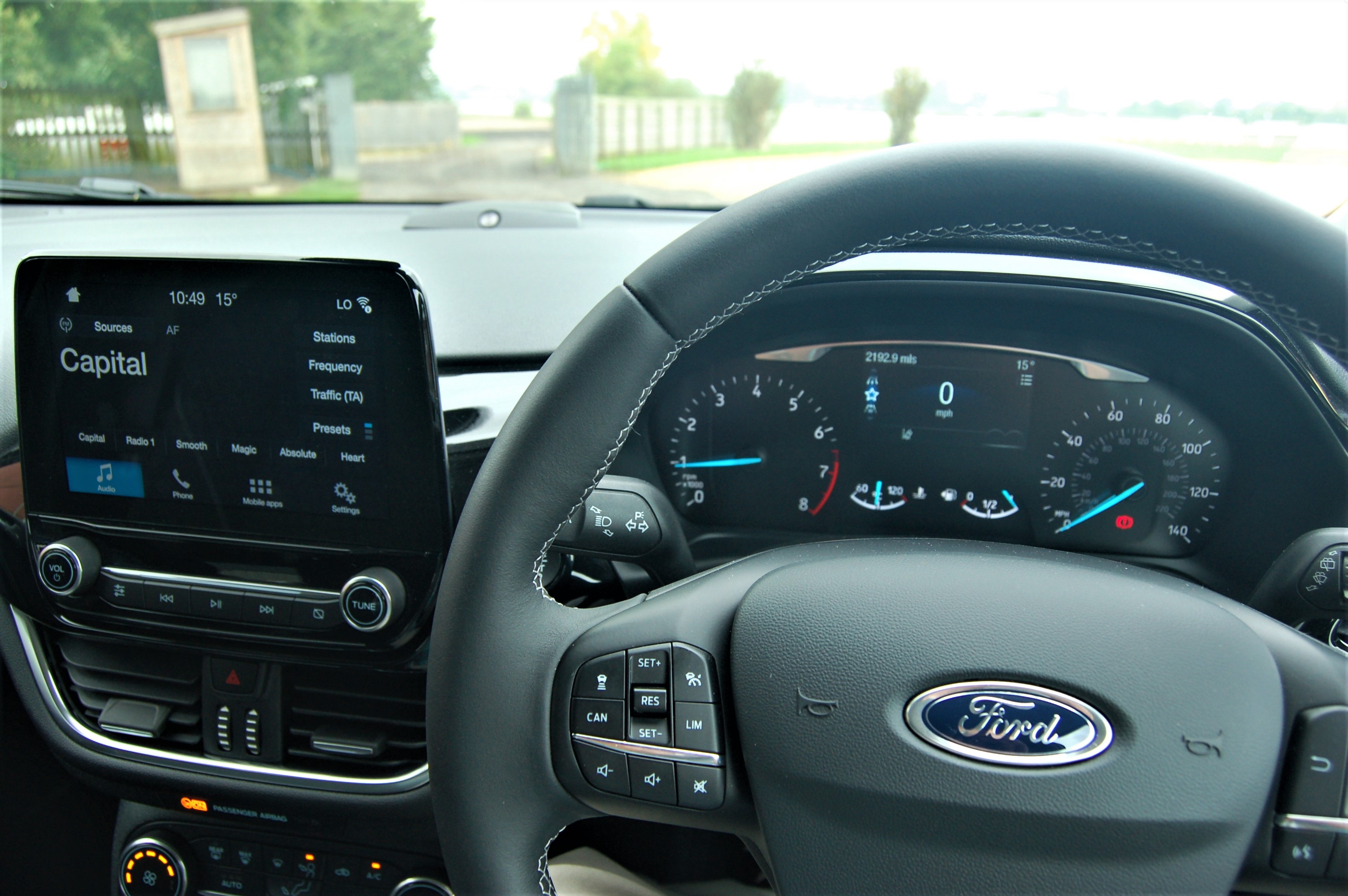
The 122bhp version of Ford’s revolutionary one-litre-triple engine is available in the Fiesta but I have to state that I was gobsmacked by the brilliance of its 97bhp alternative. Its 0-60mph acceleration time (quoted as 10.2 seconds) feels far brisker than the on-paper suggestion, even though its 113mph top speed is class competitive. However, the unit’s 126lbs ft of torque pays enormous dividends, with a decent amount of pull in the intermediate ratios of the test car’s six-speed manual gearbox. It is also worth highlighting that the gearshift quality is like the proverbial hot-knife-through-butter.
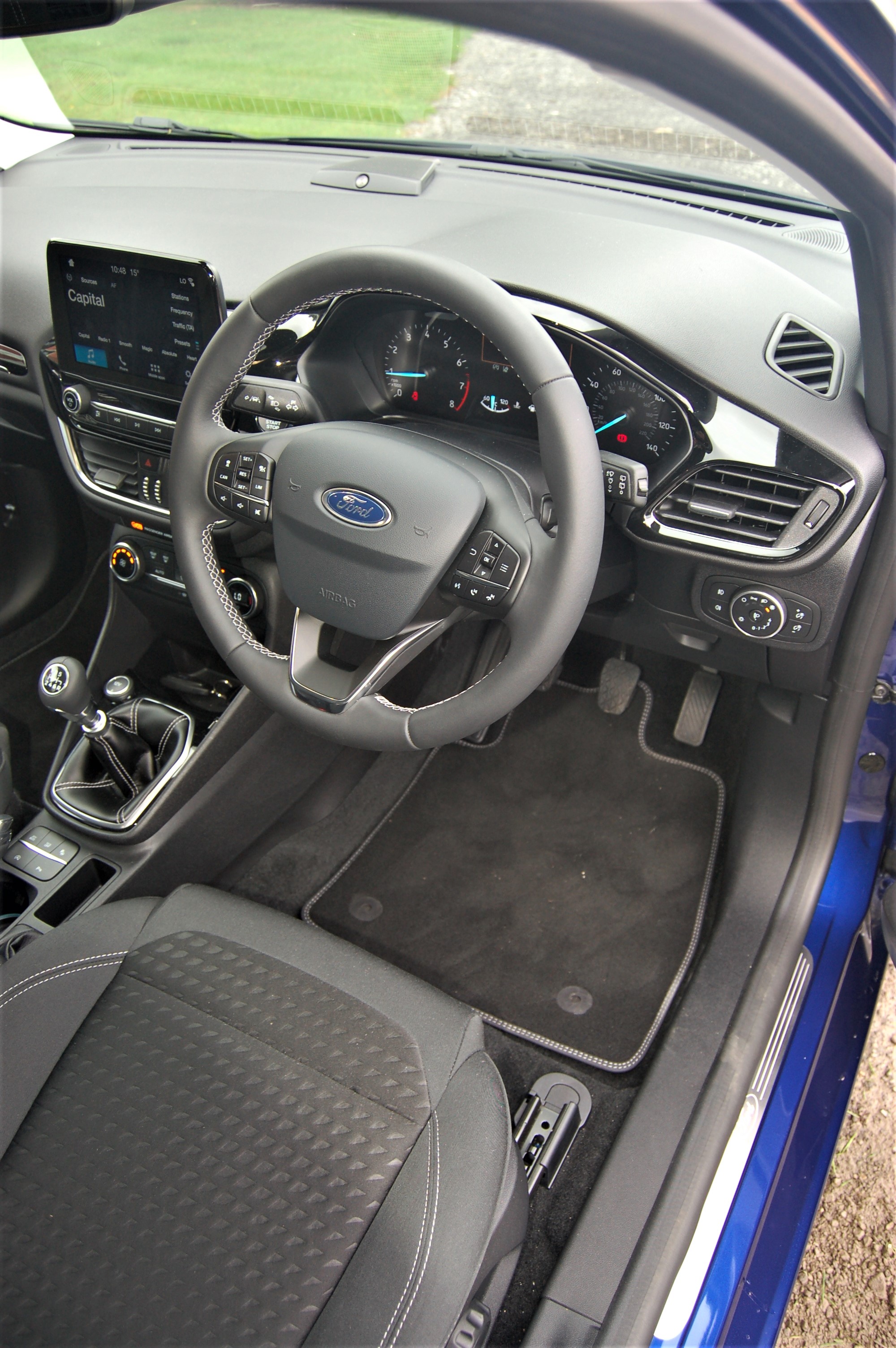
The engine seldom feels less than willing, revving freely up to and even beyond the 6,750rpm redline on its rev-counter, emitting a distant, off-beat thrum that is redolent of the latest crop of 1.0-litre small capacity engines. Having made it my duty to sample every single one of the breed, Ford’s effort is no less than superb and helps the driver to engage with the first-rate balance of the car’s overall composure. Numerous engineering improvements have been made to the drivetrain of the new Fiesta and they work most engagingly.
The average Fiesta operator/owner will be more than delighted with the Official Combined fuel consumption figure of 65.7mpg. However, as the encouragement to dig deeply into the Fiesta’s complete range of competences is sure to reduce its frugality, I reckon that most drivers will be delighted to achieve around 50mpg in daily motoring conditions, stretching it during more relaxed weekend expeditions. A 97g/km CO2 factor helps to keep taxation at a lower ebb.
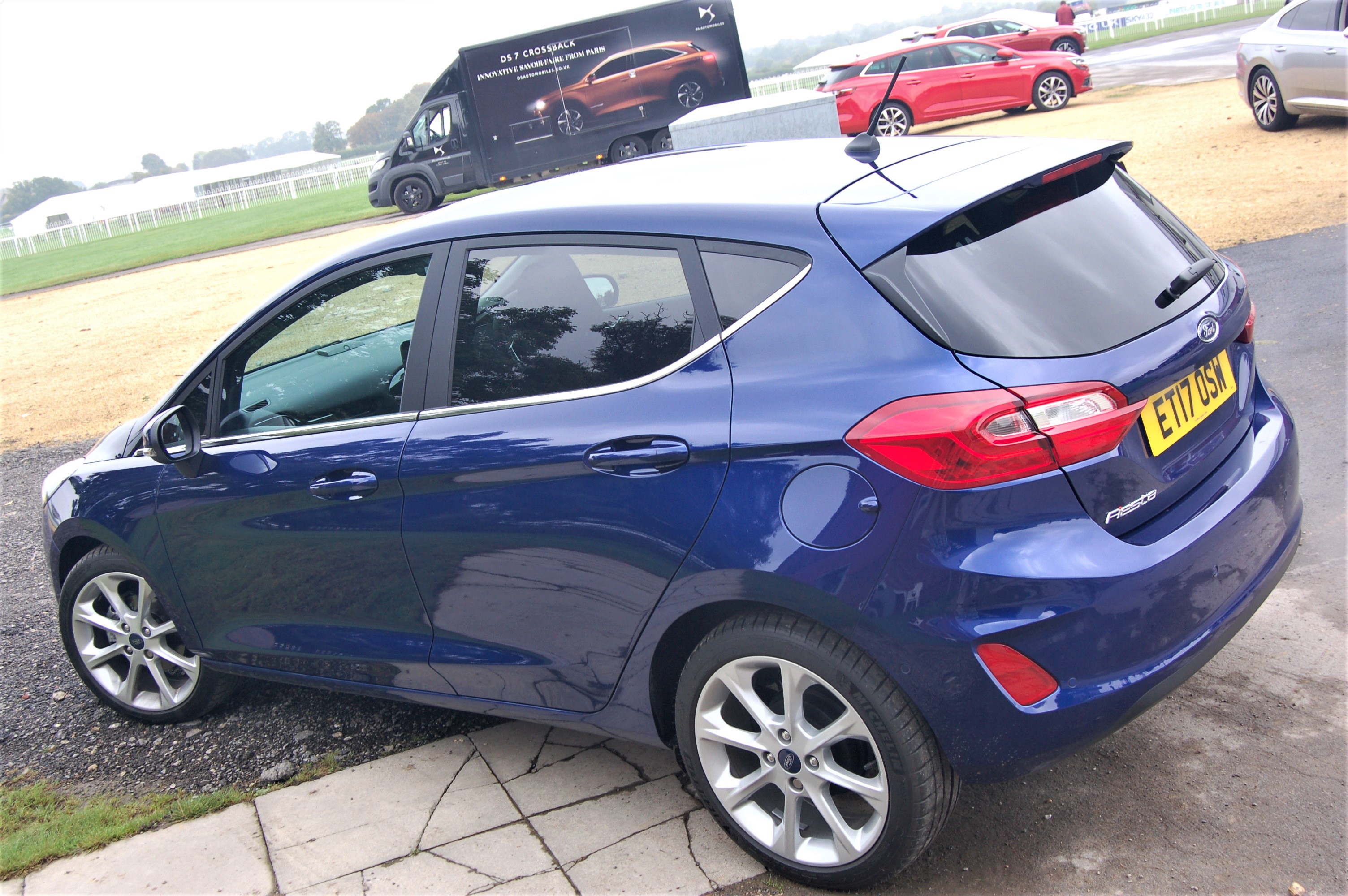
The Fiesta has always been a delightful car to drive, ever since its inception precisely 41 years ago. Its ride quality is beautifully resolved, being compliant and resilient, even on the larger, alloy wheel option. I would venture to suggest that it is the best in class. However, it is aided by steering that reacts with religious zeal to driver twirling, without the nervous edge of some of its class rivals.